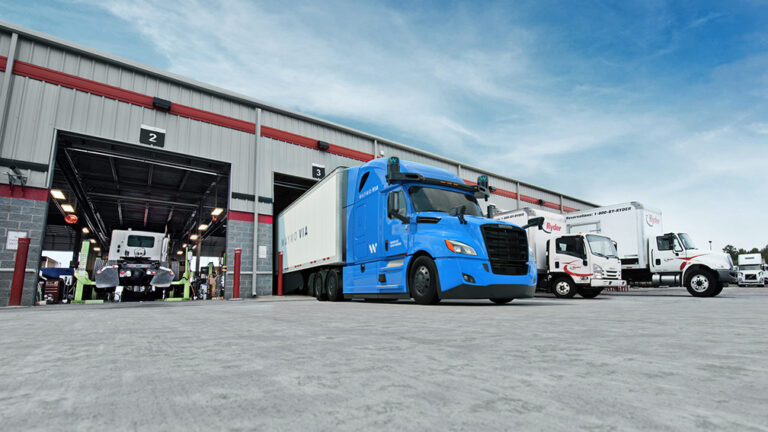WASHINGTON — The Commercial Vehicle Safety Alliance (CVSA) has announced a new inspection standard and procedure designed to govern inspections of commercial motor vehicles equipped with automated driving systems (ADS) — also referred to as autonomous or driverless vehicles.
CVSA officials said the announcement “represents years of CVSA Enforcement and Industry Modernization Committee and Automated Vehicle Working Group meetings, discussions and development, as well as procedural testing, finetuning and re-testing of the new enhanced inspection program for ADS-equipped commercial motor vehicles.”
The CVSA worked with commercial motor vehicle inspectors and state highway patrols, inspection and enforcement experts, motor carrier representatives, the autonomous trucking development community and federal and state government officials “to develop commercial motor vehicle inspection standards specific to the unique needs, requirements and challenges of ADS-equipped commercial motor vehicles,” according to a news release.
“This enhanced inspection procedure for driverless commercial motor vehicles will ensure the highest level of safety and provide law enforcement with the information they need to be confident about the roadworthiness of autonomous trucks operating on our roadways,” said CVSA President Maj. Chris Nordloh with the Texas Department of Public Safety.
Currently, for driver-operated commercial motor vehicles, a driver conducts a pre-trip inspection prior to starting a trip and a post-trip inspection at the end of the trip.
Along the driver’s route, the driver may be required to drive through a weigh/inspection station and/or be stopped at roadside and may be subject to a CVSA North American Standard Inspection. However, roadside inspection/weigh station environments are challenging for ADS-equipped vehicles and those commercial motor vehicles are not compatible with today’s roadside enforcement inspections, which rely on assistance from the driver.
The Enhanced CMV Inspection Program establishes a no-defect, point-of-origin inspection program for ADS-equipped commercial motor vehicles. The program includes an enhanced inspection standard and procedure for motor carriers operating ADS vehicles and a 40-hour CVSA training course and exam for motor carrier personnel who will be conducting the inspections.
For the new program, rather than the driver conducting a pre-trip inspection, as is currently done, for ADS vehicles, CVSA-trained motor carrier personnel will conduct the Enhanced CMV Inspection Procedure on selected ADS-equipped vehicles from their fleets at the point of origin before dispatch, as well as in-transit inspections at a dictated interval throughout the trip. Once on the road, the ADS vehicle would be required to communicate to law enforcement while in-motion that it passed the origin/destination inspection, its automated driving systems (as a whole) are functioning, and it is operating within its operational design domain.
Those ADS vehicles will then bypass fixed inspection sites. En-route roadside inspections of ADS vehicles by law enforcement officials would be limited to situations where an imminent hazard is observed or during a post-crash investigation. In addition, all ADS vehicles must be able to respond to law enforcement should an officer attempt to pull over a vehicle. Any truck or trailer or commercial motor vehicle combination that fails the Enhanced CMV Inspection Procedure at the point of dispatch must be repaired.
“Enhanced CMV inspections will raise the bar for road safety while giving law enforcement increased transparency into autonomous truck operations,” said Ariel Wolf, general counsel for the Autonomous Vehicle Industry Association. “We’re thankful to CVSA for developing this new standard in close collaboration with industry, and we look forward to continuing this partnership as we prepare for the program’s implementation in states nationwide.”
The American Trucking Associations (ATA) helped the CVSA with the project.
Kevin Grove, director of safety and technology policy for the ATA, said that the organization “was pleased to work with CVSA, our automated truck suppliers and industry partners in developing an enhanced inspection policy for driverless commercial vehicles. This is an important step that will facilitate safe and effective deployment of automation.”
The Trucker News Staff produces engaging content for not only TheTrucker.com, but also The Trucker Newspaper, which has been serving the trucking industry for more than 30 years. With a focus on drivers, the Trucker News Staff aims to provide relevant, objective content pertaining to the trucking segment of the transportation industry. The Trucker News Staff is based in Little Rock, Arkansas.








